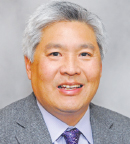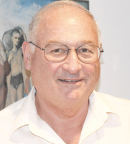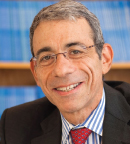More evidence of the power of pathologic complete response (pCR) now comes from an update of the multicenter, adaptively randomized I-SPY 2 trial. In a study reported at the 2017 San Antonio Breast Cancer Symposium, pCR predicted for event-free and distant disease–free survival in high-risk breast cancer.1 The findings validate pCR as a very strong surrogate endpoint for these outcomes, according to Douglas Yee, MD, of Masonic Cancer Center at the University of Minnesota, who presented the study.
“Pathologic complete response is a strong predictor in the setting of a multiple-agent platform trial and is equally predictive across all tumor subsets,” Dr. Yee said.
Study Rationale
A number of neoadjuvant trials have established a relationship between pCR and event-free survival. The Cortazar meta-analysis, which evaluated approximately 11,000 patients across 12 studies, showed that achievement of pCR reduced the risk of death and recurrence by 52%, and this relationship existed among all breast cancer subtypes,2 Dr. Yee said.
“But as with any meta-analysis, there were multiple trials contained in this one, with almost all of them including various cytotoxic agents. Further, the definition of pCR was not consistent, and not all studies included nodal status in the definition,” he pointed out.
I-SPY 2 Details
The multicenter, adaptively randomized I-SPY 2 platform uses pCR as the primary endpoint to identify investigational drugs that will improve outcomes in patients with stage II/III breast cancer who are at high risk for early recurrence. The trial investigates all breast cancer subtypes, based on hormone receptor, HER2, and 70-gene (MammaPrint) status. In more than 1,000 patients, 11 investigational agents and combinations have been added to standard neoadjuvant chemotherapy, and several of the drugs have “graduated” from the trial based on their ability to substantially increase the chance of pCR in at least a single prespecified breast cancer subtype.
The study includes standards for eligibility and pathology assessment and requires that all chemotherapy be given before pCR determination. The study also mandates long-term follow-up of patients over time, which allows investigators to correlate early, intermediate, and late endpoints, explained Dr. Yee.
The current analysis included 746 patients on 11 experimental and control arms, followed for a median of 2.7 years. The primary endpoint for this analysis was pCR, defined as no residual invasive cancer in the breast or lymph nodes, assessed using the Residual Cancer Burden method. It is important to note that patients with hormone receptor–positive, HER2-negative disease who had low MammaPrint scores were not enrolled to avoid exposing genomic low-risk patients to chemotherapy.
Low Recurrence Risk When pCR Achieved
Of the 746 patients, 259 (35%) achieved a pCR and 487 (65%) did not; 12 patients did not undergo surgery and were considered non-pCR per protocol. There have been 126 event-free survival events and 109 distant relapse–free survival events.
The achievement of pCR varied considerably according to subtype:
- Hormone receptor–negative/HER2-positive (n = 77): 68%
- Hormone receptor–negative/HER2-negative (n = 245): 41%
- Hormone receptor–positive/HER2-positive (n = 149): 39%
- Hormone receptor–positive/HER2-negative (n = 275): 18%.
The analysis combined results with all 11 drugs, including drugs that “graduated” and those that did not, as well as paclitaxel plus anthracycline (the control arm). “We are not comparing one treatment arm vs another. We are comparing all patients who achieved a pCR vs no pCR,” he explained.
“For both event-free and distant relapse–free survival, there were exceptional rates, and pCR was shown to be a highly significant predictor of both,” Dr. Yee reported.
Patients who achieved a pCR had a 3-year event-free survival rate of 94%, compared with 76% for patients in whom pCR was not achieved (hazard ratio [HR] = 0.20; log rank P = 1.17e-09). Distant relapse–free survival rates at 3 years were 95% and 79%, respectively (HR = 0.20; P = 1.75e-08).

Pathologic complete response is a strong predictor of event-free survival in the setting of a multiple-agent platform trial and is equally predictive across all tumor subsets.— Douglas Yee, MD
Tweet this quote
Three-year survival rates were significantly higher among pCR achievers. In patients with triple-negative breast cancer, 3-year event-free survival was 92% for pCR achievers, vs 67% for the non-pCR group (HR = 0.17; P < .00001), and distant relapse-free survival rates were 94% and 70%, respectively (HR = 0.16; P = .00001). In hormone receptor–positive/HER2-negative patients, event-free survival rates were 94% and 79%, respectively (HR = 0.21; log rank P = .016), and distant relapse–free survival rates were 94% and 80% (HR = 0.22; P = .024).
“When you plot these event-free survival rates on a graph, stratified by achieving a pCR or not, you see that all subtypes achieving a pCR enjoy a very similar event-free survival,” he said.
Event-free survival rates ranged from 92% to 96% for patients achieving a pCR, whereas they dropped to 53% to 87% for those lacking a pCR. The best rate in the non-pCR subset was for hormone receptor–positive/HER2-positive patients.
Biomarker in Breast Cancer
- The adaptive I-SPY 2 trial showed that achievement of pCR to neoadjuvant therapy is associated with significant improvements in event-free and distant relapse–free survival, suggesting it is an appropriate surrogate for clinical outcomes.
- Of 746 patients in the trial, 259 (35%) achieved a pCR and 487 (65%) did not.
- At 3 years, event-free survival for patients achieving a pCR was 94%, vs 76% for patients in whom pCR was not achieved. Distant relapse–free survival rates at 3 years were 95% and 79%, respectively.
- The benefit of pCR was observed across all breast cancer subtypes.
“Our findings suggest optimizing the strategy to allow each woman to have a pCR should be pursued,” stated Dr. Yee. “I-SPY 2 is the ideal platform trial to test this strategy, given we have multipole investigational drugs that could be matched to the biology of a patient’s tumor.”
He further commented that achievement of pCR with any therapy, for any subtype, may serve as a primary endpoint for accelerated approval of new drugs if event-free survival is evaluated in the same population. It would be helpful to have minimally invasive techniques capable of identifying pCR prior to definitive surgery, Dr. Yee added. ■
DISCLOSURE: Dr. Yee reported no conflicts of interest.
REFERENCES
1. Yee D, DeMichele A, Isaacs C, et al: Pathological complete response predicts event-free and distant disease-free survival in the I-SPY 2 trial. 2017 San Antonio Breast Cancer Symposium. Abstract GS3-08. Presented December 7, 2017.
2. Cortazar P, Zhang L, Untch M, et al: Pathological complete response and long-term clinical benefit in breast cancer. Lancet 384:164-172, 2014.



